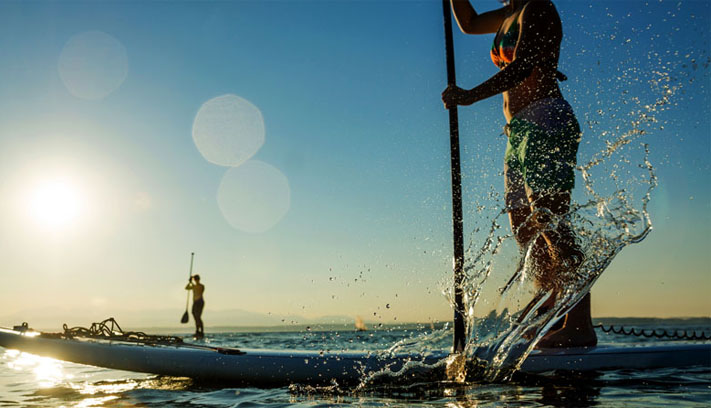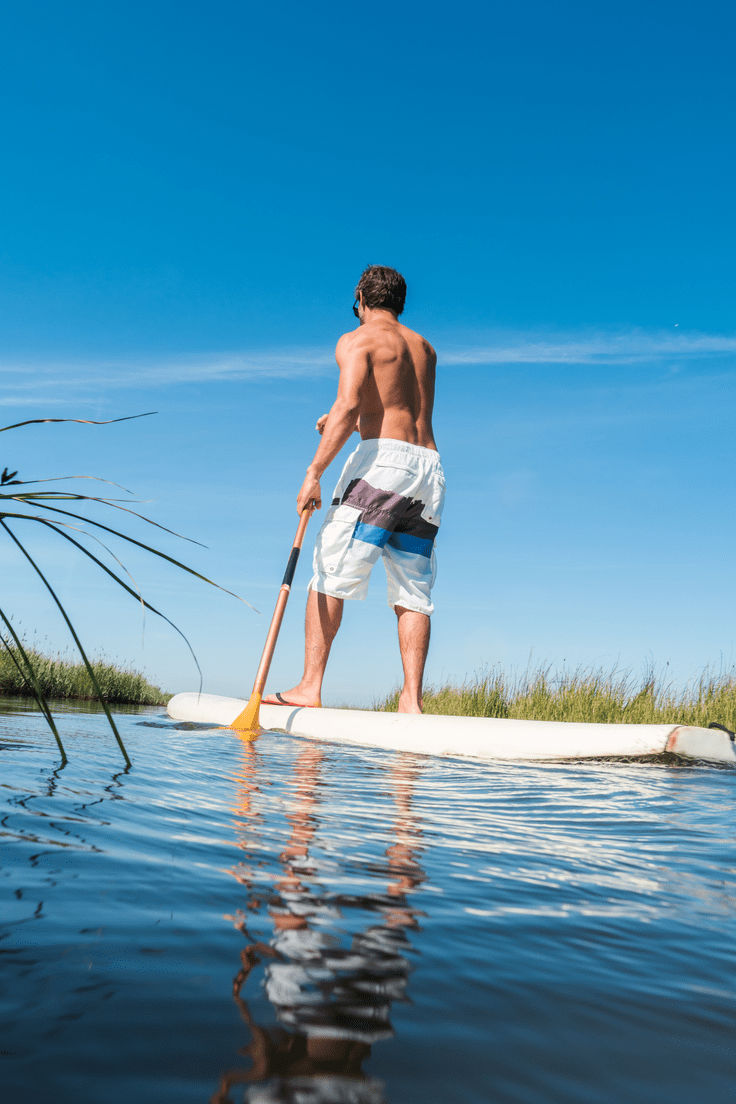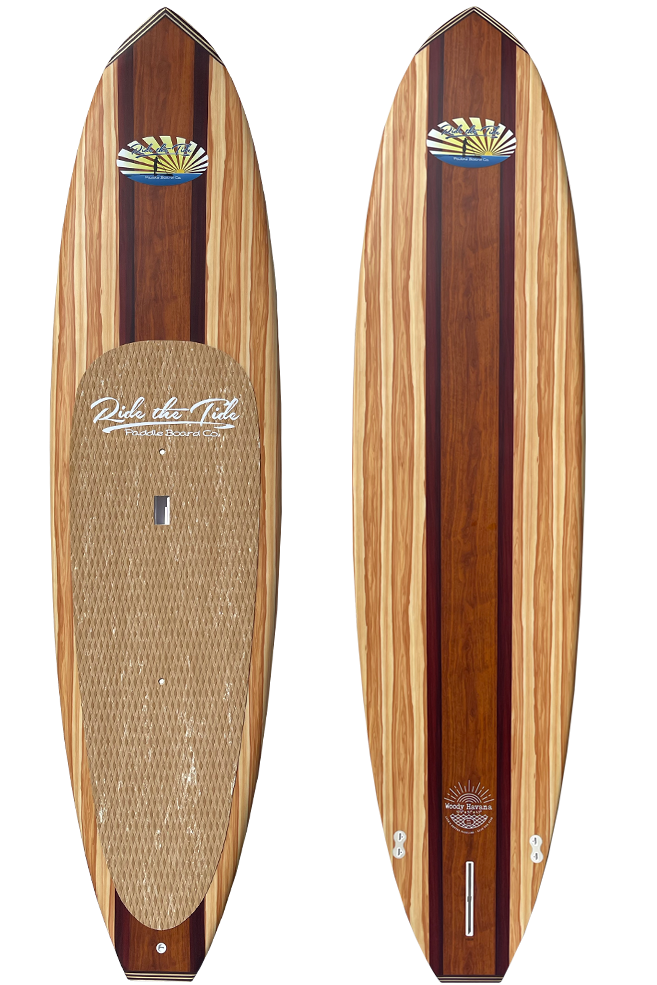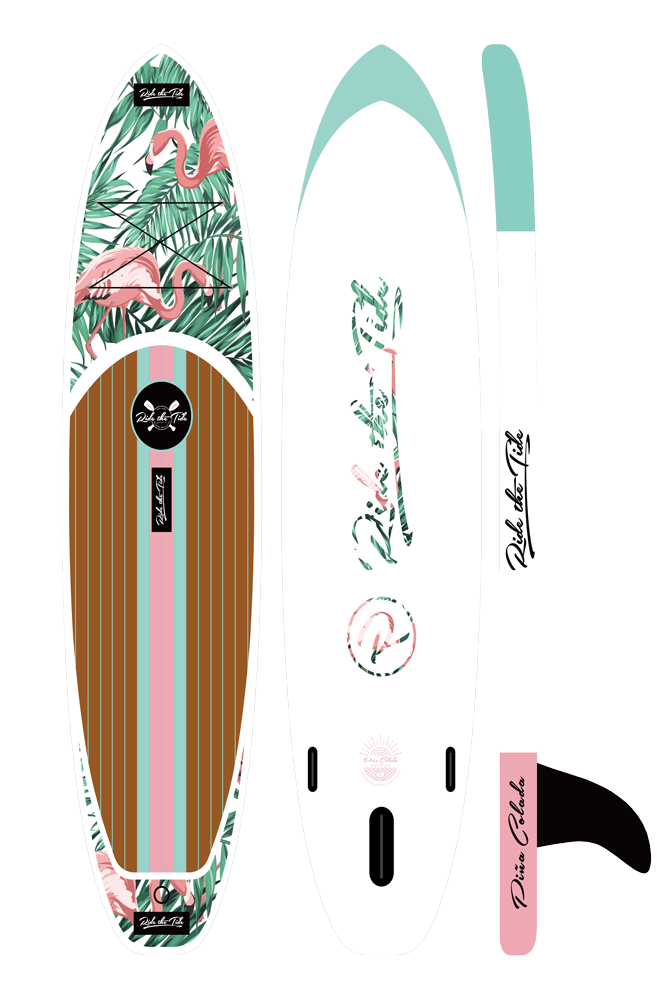
30-06-2017 / Learn To SUP
Ten Basics To Master As You Learn To SUP
Ride The Tide
So you wanna be a SUPer? Great choice - but it’s not quite as simple as it looks. We have compiled a list of 10 basic skills to think about as you learn to SUP, covering everything from paddle position to turning tactics in an effort to keep you as dry as possible.

Make sure that the water you start out in is deep enough that the fin does not get caught at the bottom. Position yourself as close to the centre of the board as possible, and start on your knees - you might want to use a few short strokes of your paddle on either side of the board to keep it straight. Once comfortable, use one foot at a time to stand up, keeping your feet shoulder width apart. Engage your core and keep a slight bend in your knees to stay balanced.
2. Powerful paddle positionYour paddle is essentially a lever - in simple terms, you want your top hand at the end of the handle, and your bottom hand in the middle of the shaft. This wide grip will generate power. If both hands are too close together on the shaft, you will expend more energy and make less progress.
3. Left, Right, Left, RightTo turn your board while keeping it stable, you must use both the paddle and your torso. To turn right, place the paddle underwater on the left side of your board and turn your torso to the right, remembering to keep your knees bent. As you pull the paddle toward the tail of your board, you will feel the nose turning quickly to the right. Reverse the instructions to turn left, remembering to move your hand position accordingly.
4. Reach, catch, powerFirst-time SUPers often have their paddle facing the wrong way - you need the angle of the paddle to move away from your body, not towards it. First, reach with your paddle by extending your lower arm and aiming for a point in the water as far forward as you can comfortably reach - four feet in front of you is a good rule of thumb. Next, you need to catch - this is when you fully submerge the blade of your paddle while keeping the shaft as close to vertical as possible. Finally, you use power - pull the blade back in a smooth and controlled motion, keep your balance and don’t pull further back than your feet, as this energy will be wasted.
5. Don’t spin me roundBody placement is key to ensuring you remain on a straight trajectory. Using a ‘surf’ stance, with your body facing away from the nose, will make it difficult to maintain stability and generate power. Keep your feet parallel and shoulder width apart, pointing toward the nose of the board and maintain as athletic a pose as possible.
6. It’s all in the hips …Use your hips to make small adjustments to your position while remaining stable. Some beginners feel more comfortable having one foot a few inches in front of the other, rather than exactly parallel. This is okay, as long as your stance is not too staggered.
7. ...and the coreCore engagement is vital to maintaining balance on your board and generating power as you stroke. Keeping your knees locked can increase pressure on your back, so always ensure your knees are bent slightly while on your board. In windy or choppy conditions, many boarders opt to kneel until the conditions ease, as your centre of gravity is lower and the board is easier to control as a result.
8. Put your back into itEngaging your back muscles is vital to avoiding fatigue and generating power with your blade. While your arms play their part, the major muscle groups in your back should be doing the bulk of the work.
9. Don’t look downHead position is more important than you might think in learning to be a SUPer. Looking down towards the water as you move can impair your balance and cause you to fall forward, so ensure your head is up and looking towards the horizon as much as possible.
10. Chuck a ueySometimes referred to as the buoy turn, turning 180 degrees on your SUP may be necessary if there are difficult conditions ahead. As you prepare to turn, you can reduce speed by moving your feet toward the back of the board, staggering your feet as you need to keep balance. Bend your knees, get low to the board and use a wider stroke of the blade than normal to execute a turn. Take note though, this one takes a bit of practice!
Start your Journey With Ride The TideWhile this basic advice can help you learn to SUP, the Ride The Tide team can set you up with all of the equipment you need to get the most out of your boarding experience. We have been supplying top quality boards and accessories across Australia since the summer of 2013. To take a look at what we have to offer, come visit our warehouse from 9am -12pm every Saturday. We’ll provide you with advice and and make sure that you get the best equipment for your experience and skill level. For any enquiries, you can contact Dean on 0403549702 or dean@ridethetide.com.au.
 Loading... Please wait...
Loading... Please wait...



